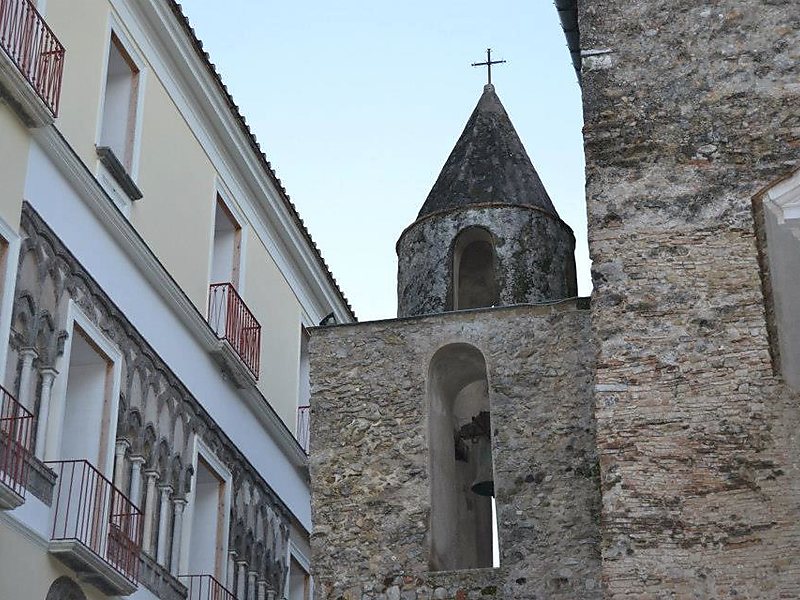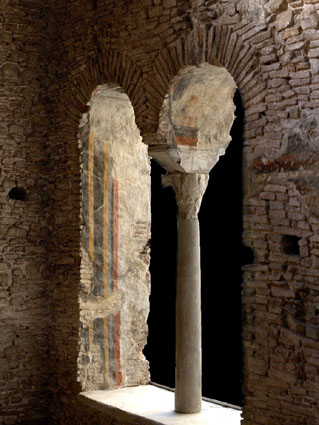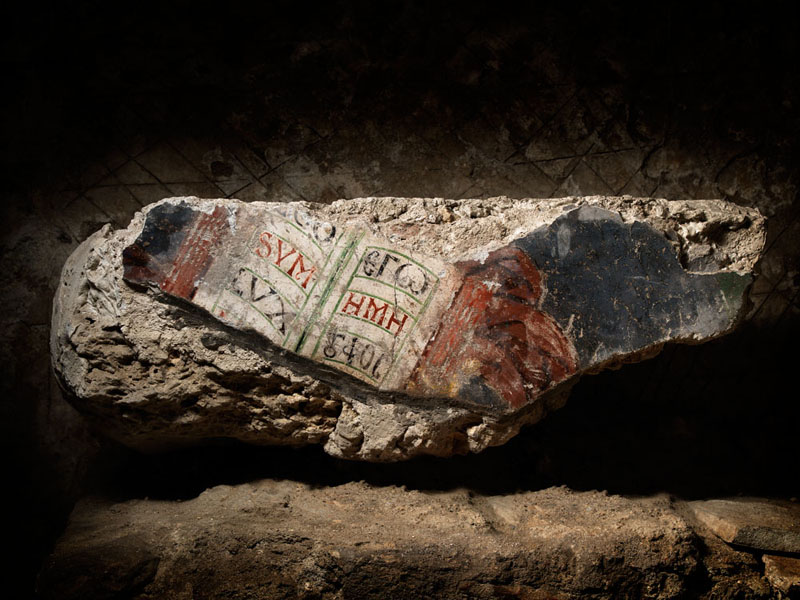San Pietro a Corte
The church of S. Pietro a Corte was founded in the Lombard period, in the eighth century AD, by Prince Arechi II, who moved the capital of minor Longobardia from Benevento to Salerno. The area of the site of the religious structure had been occupied in Roman times by a thermal building, then reused in the early centuries of the Christian age as […]

The church of S. Pietro a Corte was founded in the Lombard period, in the eighth century AD, by the prince Arechi II, who moved the capital of minor Longobardia from Benevento to Salerno. The area of the site of the religious structure had been occupied in Roman times by a thermal building, then reused in the early centuries of the Christian age as a place of worship and burial place. The church stands in the area already known in Roman times ad Like, with the function of the prince's private chapel and is dedicated to Saints Peter and Paul.
The foundation pillars of the Palatine Chapel rest on the frigidarium of the Roman baths, dating back toflavia-traianea age, III century AD, the ancient building was about 13 meters and was covered with barrel vaults and cross vaults. The room was originally lit by large windows. In the first centuries of the Christian age, then, the building is reused as a religious hall, as evidenced by epigraphs dating from the fifth to the eighth century AD. Under the reign of Arechi the demolition of the vaults was carried out and the division of the thermal building into two rooms separated by a wall partition. Above it the attic of the Palatine chapel.
The church therefore has four main stratifications: the Roman thermal building; the paleochristian ecclesia; the chapel of the Lombard palace and finally the medieval public palace. The building, indeed, it was the seat of the meetings of the Parliament during the 13th century, and in it the solemn ceremony of the conferral of the degrees of the Medical School of Salerno was held.

The church is divided into a single nave ending in a semicircular apse, built to replace the original rectangular apse during the sixteenth-century restoration. This intervention, made around the 1576, it was built by the will of the abbot Decio Caracciolo and also includes the construction of the current access staircase to the church.

The Romanesque bell tower which rises on the north side of the church, was joined to it by the will of the prince Guamaro II around 920 d.C., as evidenced by the The Chronicle of Salerno, although recent excavations have suggested that the current bell tower dates back to the 10th century.
A small chapel dedicated to St.. Anna. The southern wall of the chapel, the one contiguous to S. Pietro, bears a sixteenth-century painting which represents S. Anna with the Virgin Child and two Saints.

Monumental Complex of San Pietro a Corte – FREE ENTRY
Opening Hypogeum and S.Anna church
from Tuesday to Saturday ore 9.30 – 18.30 (last admission hours 18.00)
Sunday ore 10.00 – 19.00 (last admission hours 18.30)
Monday closed
Opening Palatine Chapel (Brotherhood of Santo Stefano) by the Salerno Archaeological Group Association
Winter period from 25 September to 30 June:
Saturday 10.00 – 13.00 / 18.00 – 21.00
Sunday 10.00 – 13.00
Summer period from Saturday 1 July to Sunday 24 September
Saturday 18.00 – 21.00
Sunday 10.00 – 13.00
reservations for groups or schools: 338 1902507 Salerno Archaeological Group; 333 9643285 dr. Marano prior of the chapel.
San Pietro a Corte
Larghetto San Pietro a Corte
Salerno

